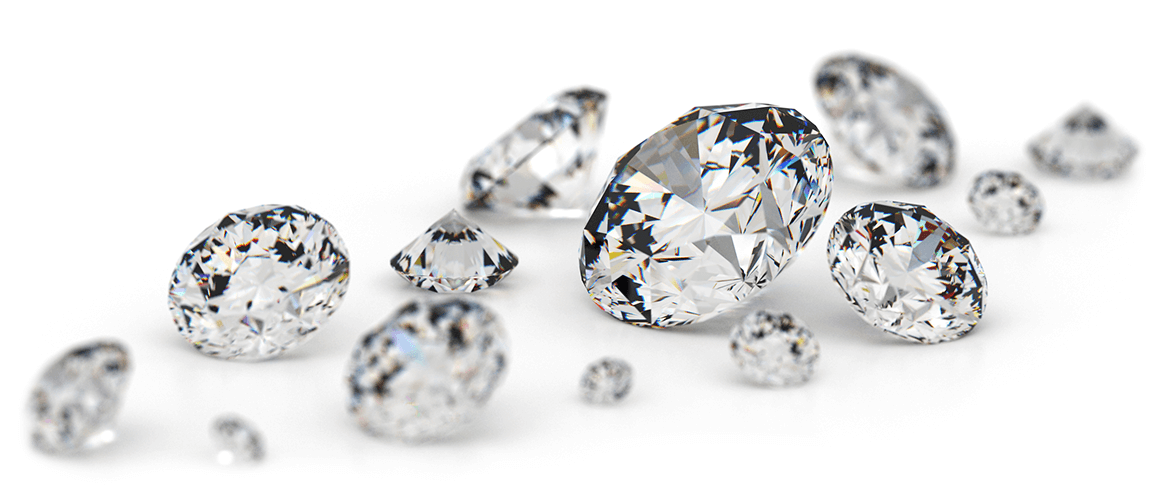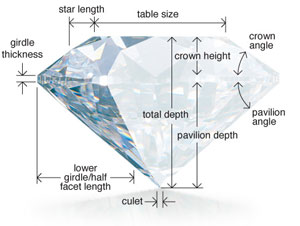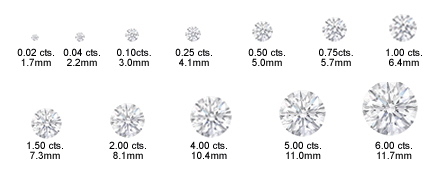Diamonds
Every diamond is unique, inspiring thoughts of luxury, love and beauty. Diamonds are available in a wide range of shapes, colours, sizes and qualities. The value of a white diamond is determined by what are commonly referred to as the 4C’s: Colour, Cut, Carat and Clarity.

Cut
While nature determines a diamond’s colour, clarity, the hand of a master craftsman is needed to release its fire and beauty. Most gemmologists consider the proportions or cutting grade of a diamond to be its most important characteristic because it allows the maximum amount of light to enter and reflect back out of the diamond. This then gives each diamond its unique sparkle and brilliance . In other words, a diamond with a poor cut will appear dull and lifeless, even if it has perfect colour and clarity.

Carat
Carat or ct is calculated as 1/5 of a gram of a single piece of diamond. In other words, a one carat diamond weighs 0.2 grams or 200 milligrams. Aside from carat, diamond weight (especially the smaller pieces) can also be expressed as points. One carat diamond is equal to 100 points diamond.

Clarity
As diamonds are formed in the earth over millions of years, there will inevitably be imperfections as carbon crystallises to become a diamond. These imperfections are known as ‘inclusions’. A diamond free of inclusions and blemishes is very rare, and thus more valuable. Therefore, the cleaner the diamond, the more it will cost. The chart below is used to grade a diamond based on its inclusions.

Colour
A white diamond’s colour is one of the important factors in determining its value. The nearer a diamond is to being absolutely colourless, the more valuable it will be.
Whilst white diamonds are valued for their lack of colour, other diamonds are valued for their depth of colour. These diamonds will have a strong distinct colour such as well defined reds, blues, pinks, greens, and bright yellows. These spectacular coloured diamonds are known as ‘fancies’. These are highly prized and extremely rare.

